Canoe Camping on the St. Croix and Namekagon Rivers
Three Nights Camping on the St. Croix National Scenic Riverway
The sky has grown light enough to read by so the sun is breaching the horizon, unseen beyond the tall trees of the forest, and the three of us – Rob and Dave in a gear-laden canoe and I in a similarly stuffed kayak – slip away on the gentle current into morning mist. My companions, longtime annual-canoe-trip friends from youth, start to fade from view a hundred feet from me, turning ghostlike in the white that lingers in the first mile or so. We come upon deer, their heads popping up alert from where they drink at the river’s edge, and they stare at us, finally fleeing into the brush as we get too close. The rest of the day we chase eagles downstream, watching them alight in the upper branches of the next tree we will scare them out of. Fish jump and stir and turtles slide off their rocks or drop like cannonballs from higher perches on downed trees along the banks. We see beavers, and later in the evening, we hear them, sending pattering Morse code through the earth, banging it like a hollow log. They find the places in the ground that resonant, by some internal diving rod perhaps, or they tap along the earth in search of that sweet spot, not unlike your doctor testing the health of your insides. It’s an impressive sound, barely audible, like my eardrum is trembling and I keep asking Rob and Dave if they hear it too.
The chatter of old friends mixes with the chatter of birds and chipmunks, the babbling of riffling water, and the wind rustling in the deciduous trees or whispering in the pines. This is what I love about Wisconsin, how close these places are no matter where you live; how pristine rivers flow within a stone’s throw of town – or right through it — and hundreds of miles of hiking trails follow a fine green line between highway and farmland.
Previous trips include several sandbar camping trips down the last undammed 92-mile stretch of the Wisconsin River, island camping within the seemingly remote Turtle – Flambeau Flowage, and a bridge too far down the writhing Kickapoo River. This was our first outing on the 252 miles of the St. Croix National Scenic Riverway and unlikely to be the last.
Check out a bit of drone footage of our campsites
Our journey actually begins with some paddling on the Namekagon River, the entire length of which is part of the nationally protected waterway. We have chosen to skip the upper portion of this, opting to start beneath the dam to avoid a portage and the long stretch of flat water at Trego Lake. The river has widened by this point but remains intimate, riffled and steady, the banks entirely forested from here and on another 31 miles to where it gives up its name to join the St. Croix not far before where the latter bends south and becomes the border between Wisconsin and Minnesota. Other than the three bridges we pass under along this segment, the only other signs of the human world are 5 undeveloped landings and the 35 square signs, smaller than postcards, marking where a rustic campsite lies in the woods a few steps from the river bank. We don’t see a single soul on the river until day three when we encounter DNR folks from the Minnesota side of the St. Croix and a few fisherman on the much wider river as it heads south to join the Mississippi.
On day one, evening is already upon us when we push off from the landing beneath the bridge of County Highway K west of Trego. I am reminded that like car and house repairs, it doesn’t matter how much you plan, things always take longer than you expect. In this case, we are putting in about seven hours behind schedule and consequently will not be getting in the 10-15 miles of paddling we had expected on this the first day of a three and a half day river trip.
The river is already shadowed as the sun is close to setting, so we paddle only two miles, aided by a pleasant current, and pull out at an available first come, first served campsite thinking we’d better not risk failing to find an open site. Turns out that fear was completely misplaced. I chose the weekend after Memorial Day Weekend, figuring most people had burned up their vacation days for a while. It seems I was right.
These campsites are free for the picking and include a fire ring, picnic table, and what I like to call an “out”: an outhouse minus the ‘house’ part so you sit on your throne, king of the forest, communing and commoding with Mother Nature.
We set up camp, battle with mosquitoes for a short while at dusk, and then settle in around a fire built with gathered deadfall. Right before we turn in, a whippoorwill takes up its call somewhere outside the perimeter of firelight. I marvel at the frenetic call that gives the bird its name, and it is completely mesmerizing and oh so cool… for about five minutes. For the next couple hours or so it moves from tree to tree around us, zips through the light nearly at our noses once, and embarrasses itself like a drunk at the bar who won’t stop catcalling the ladies all night. As we lie there in the tent, eventually murderous thoughts slip to dreams, and by morning our cacophonous campmate is gone. I love falling asleep to the hum of the night forest but this species recommends a pair of earplugs.

Unnecessarily concerned about making up miles from the first day – partly because a park ranger had suggested we should plan for 10-15 on a typical day – we take advantage of the 2 m.p.h. current and with little effort average over 4. We finish the remaining 29 miles on the Namekagon and paddle 6 more on the St. Croix before finding a wooded island between Class I rapids where a campsite (S129.5) sits on the upriver point. The white noise of whitewater beats the whistling whippoorwill. So we paddled 35 miles our first full day, another 25 the next day to camp just past Norway Point Landing (S104, river left), and on the final day, we were out of the water just after lunch after covering about 14 miles to arrive at the landing at Highway 70 just west of Grantsburg.

The highlight of that final day was the Kettle River Slough. At river mile 100.7 on the park service map, the main channel of the St. Croix splits around an island. To the west (river right) of that island is an alternative route only recommended during periods of high water, typically in spring. Head of the Rapids Landing is a short distance inside and a good place to put in if you only mean to run the slough. That exclusivity makes it attractive, and being narrower than the main channel also recommends it, but as for the frequency of riffles or maybe Class I rapids, it is really about the same. There are a couple of campsites along this less than 4-mile run, and it rejoins the main channel where the river comes over a Class II ledge. (The Kettle River itself, on the other hand, is a whitewater funland farther upstream with Class II to IV rapids early in the season.)
The final moment of beauty along our trip was a side channel, again open in higher water though still accessible on foot. Sandrock Cliffs live up to their name and are inside a narrow channel just after the campsite at river mile 91.4 on river left. When you come back to the main, you have a mile more to the concrete boat landing at Highway 70 on river left before the bridge.
Planning Your Paddling Trip on the St. Croix
The national park service has excellent downloadable maps to make planning your paddling easier. It shows distances in river miles and marks campsites. Remember, camping is free but first come, first served.
Farther upstream on the Namekagon the water levels make or break your trip. Early in the season or in periods of high rain, you’re going to get nice current and avoid a lot of rocks. This trip in first week of June 2017, the Namekagon was coming down from “High” according to the park rangers and the St. Croix was “Good”. Check the park services reported water levels here: https://www.nps.gov/sacn/planyourvisit/current-conditions.htm
For this trip we had no real rocks to run around on the Namekagon, and the gage height at Leonards, WI (pretty far upstream and above two dams/lakes, but just for comparison) was 2.25 feet with a flow rate of 220 cfs on June 3. A month later it was 1.85 and 120 and still considered “Good” by the rangers on the section we paddled. On June 3, the St. Croix read 1.95 feet/1,780 cfs dropping to 1.67 ft/1,540 in 48 hours. Rated as “Good.” Dropping below that would make the Kettle River Slough a bumpy ride/drag. By mid-July the Danbury gage read 1.48 ft, 1,230 cfs. A rainy period, of course, can make all the difference.
Of all the St Croix riverway maps, for this entire trip we used Namekagon Map 3, St. Croix Map 5 and Map 6.
Parts of this trip and other sections of the St. Croix National Scenic Riverway (as well as the Wisconsin, Turtle-Flambeau, and Kickapoo trips mentioned above) are detailed in my book Paddling Wisconsin:

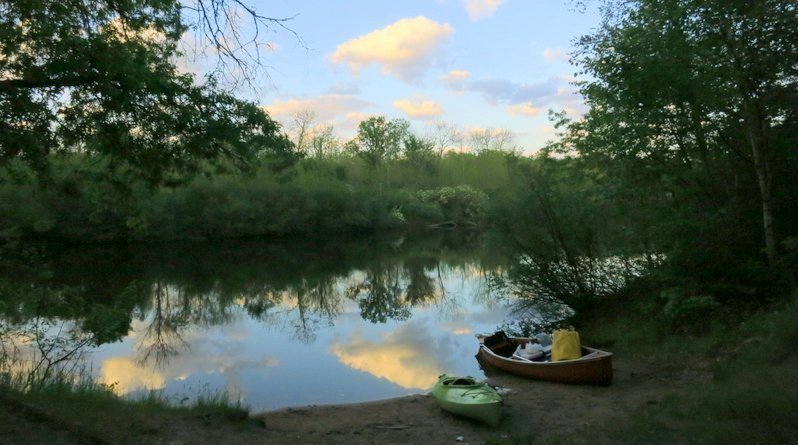

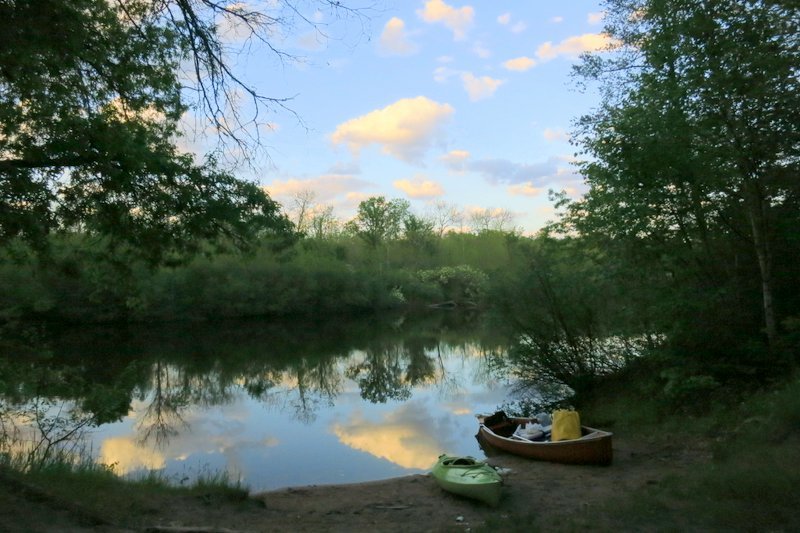

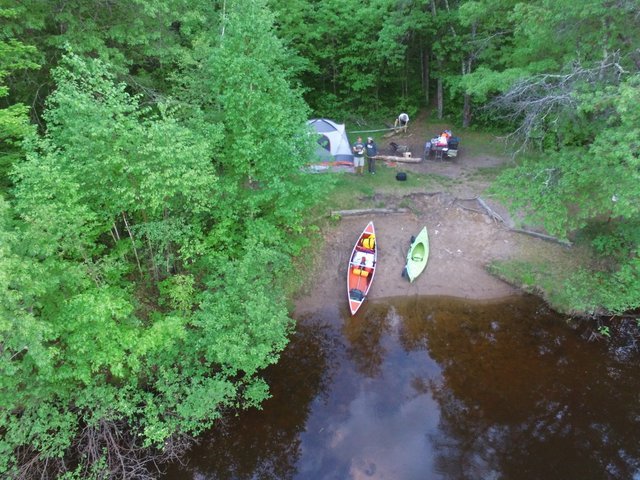
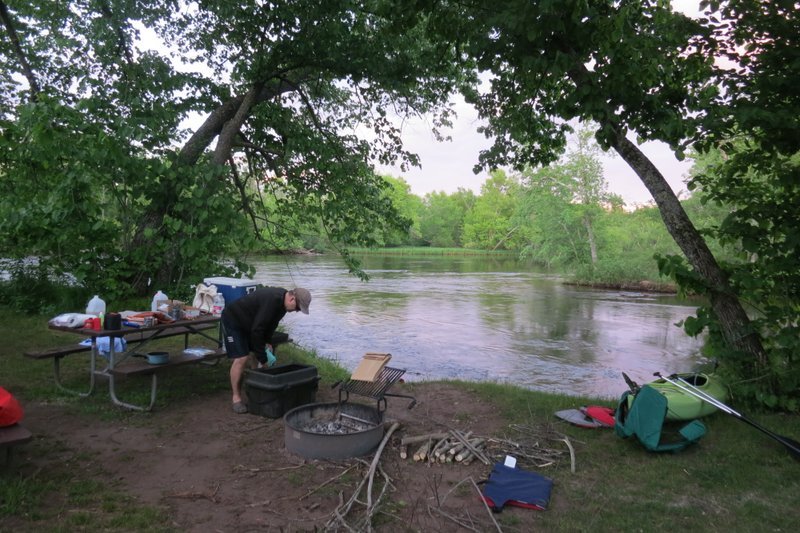




 ORDER YOUR COPY TODAY!
ORDER YOUR COPY TODAY!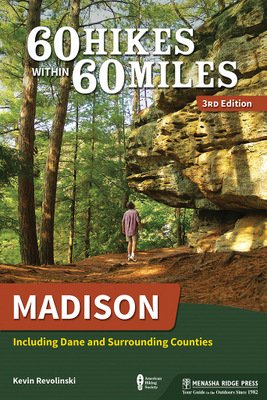 ORDER YOUR COPY TODAY!
ORDER YOUR COPY TODAY!
Pingback: Camping by Lakes and Rivers in Wisconsin - The Mad Traveler